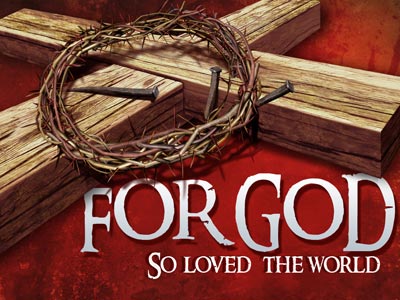-
The Punishment And Death Of Jesus
Contributed by Dr. Ronnie Grizzle on Nov 28, 2017 (message contributor)
Summary: This sermon shows the agony that Christ went through on the cross. It is to encourage Christians to evangelize the lost to help them to escape hell. It shows the lost what they face without Chrsit.
The Punishment and Death of Jesus
Isaiah 53.1-8
April 1, 2007
Thompson Creek Baptist Church
Among the Jews, scourging was limited to 40 lashes, but the Romans were restricted by nothing but their strength and their own fancy.
The whip was called a flagellum, or cat of nine tails, made by plating pieces of bone or lead into leather thongs.
The victim was stripped and tied to a post. Usually two men administered the scourging, one on either side.
Severe scourging not only reduced the flesh to a bloody pulp, but could open up the body until the bones and intestines were exposed.
It was not uncommon for the person being scourged, to die while tied to the post.
After being scourged, Jesus was taunted and mocked by the soldiers. Being dressed in a robe, they placed a crown of thorns upon his head, crushing the thorns into the flesh.
Spitting upon him and smacking him in the face with their fists, and hitting him upon the head with a staff.
After taunting and mocking him and inflicting even more pain, they then ripped the robe from him and put his own clothes back on him.
Imagine the pain he felt as the cloth reopened the wounds where the blood had dried and stuck to the fabric.
Men condemned to die by crucifixion were customarily required to carry the heavy crossbeam or patibulum, on which they were to be nailed, to the place of execution.
Jesus started out carrying his cross, but it proved too much for him. The patibulum usually weighed between thirty and forty pounds.
It was usually strapped across the shoulders. Can you imaging the pain caused by the rough heavy beam pressing into the lacerated skin and muscles of Jesus’ shoulders.
The scourging and loss of blood had weakened Jesus to the point that he could not carry the heavy crossbeam any more.
Simon of Cyrene is forced into service. Carrying the cross beam the rest of the way for our lord.
Proving that sin is an awful burden. Giving us a divine example that we cannot take care of our sin alone.
At the place of the skull…
Simon is ordered to place the patibulum on the ground. Jesus is quickly thrown backwards with his shoulders against the wood.
The legionnaire feels for the depression at the front of the wrist. He drives a heavy, square, wrought-iron nail through the wrist and deep into the wood.
Quickly he moves to the other side and repeats the action, being careful not to pull the arms too tightly, but to allow some flexion and movement.
The patibulum is then lifted in place at the top of the stipes, which is the vertical beam.
The left foot is pressed against the right foot, and with both feet extended, toes down, a nail is driven through the arch of each, leaving the knees moderately flexed.
The victim is now crucified. You would think that with the scourging, mocking, and being nailed to a cross that the victim would now gracefully die. That the infliction of pain would be thankfully over. But it is far from over.
As he slowly sags down with more weight on the nails in the wrists, excruciating, fiery pain shoots along the fingers and up the arms to explode in the brain—the nails in the wrists are putting pressure on the median nerves.
As he pushes himself upward to avoid this stretching torment, he places his full weight on the nail through his feet.
Again, there is the searing agony of the nail tearing through the nerves between the metatarsal bones of the feet.
At this point another phenomenon occurs. As the arms fatigue, great waves of cramps sweep over the muscles, knotting them in deep, relentless, throbbing pain.
With these cramps come the inability to push himself upward…air can be drawn into the lungs but cannot be exhaled.
Jesus fights to raise himself in order to get even one small breath.
Finally, carbon dioxide builds up in the lungs and in the blood stream and the cramps partially subside.
Spasmodically he is able to push himself upward to exhale and bring in the life giving oxygen.
Hours of this limitless pain, cycles of twisting, joint-rending cramps, intermittent partial asphyxiation, searing pain as tissue is torn from his lacerated back as he moves up and down against the rough timber.
Then another agony begins. A deep crushing pain deep in the chest as the pericardium slowly fills with serum and begins to compress the heart…
It is now almost over—the loss of tissue fluids has reached a critical level—the compressed heart is struggling to pump heavy, thick, sluggish blood into the tissues—the tortured lungs are making a frantic effort to gasp in small gulps of air…

 Sermon Central
Sermon Central



